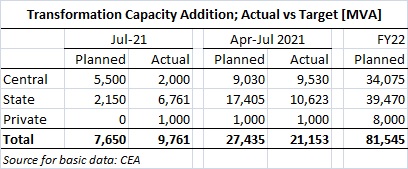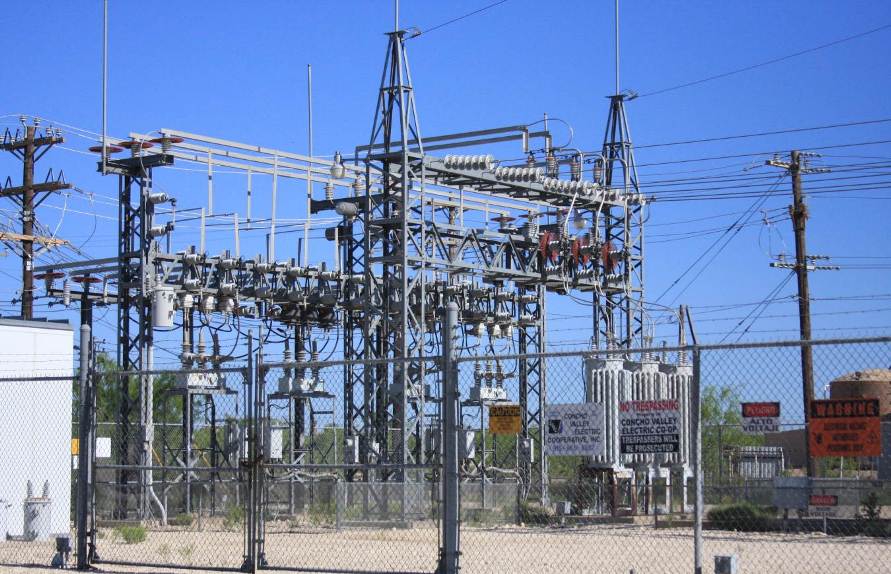Addition of transformation capacity, through substations of 220kV or higher, saw significant improvement in July 2021, latest government statistics indicate.
India could add 9,761 MVA of transformation capacity in July 2021, which was significantly higher than the actual achievement in the preceding months of FY22. The addition in July 2021 also surpassed the targeted addition of 7,650 MVA, by around 28 per cent.
 During the first four months (April to July) of FY22, however, the cumulative addition fell short of the target by 23 per cent. The actual addition stood at 21,153 MVA as against the planned 27,435 MVA.
During the first four months (April to July) of FY22, however, the cumulative addition fell short of the target by 23 per cent. The actual addition stood at 21,153 MVA as against the planned 27,435 MVA.
Much of this shortfall can be ascribed to slower project execution in the pandemic-affected first quarter of FY22. Also, state government utilities saw a big shortfall in their target achievement – especially in the 400kV substation category. For the April-July period of FY22, the state government sector could add just 3,540 MVA through 400kV substations, as against the target of 7,715 MVA. Even in the 220kV class, the performance was not encouraging – 7,083 MVA of actual addition against a target of 9,690 MVA.
It should however be noted that state power utilities bounced back in July 2021 with some encouraging numbers. These utilities added 6,761 MVA of substation capacity (across all voltage classes) in the face of a 2,150-MVA target. It is therefore evident that state power utilities commissioned several substations, which were past their planned schedule, in July 2021.
Central government utilities, mainly Power Grid Corporation of India Ltd (PGCIL), did exceedingly well. In the first four months of FY22 (April to July), the actual achievement of 9,530 MVA actually surpassed the 9,030 MVA worth of planned addition. A notable achievement in this period was of course the 800kV bipolar Raigarh-Pugalur HVDC link.
Private sector
During the first four months of FY22, the private sector contributed with 1,000 MVA of substation capacity. Though this represented only a small proportion of the total transformation capacity addition, it was very much in tune with the planned addition.
This 1,000 MVA came from just one substation – the 1,000MVA Dhanbad substation in Jharkhand, by Adani Transmission Ltd. This substation, charged on July 21, 2021, is of the 400/220kV, 2×500 MVA type and is part of the North Karanpura transmission scheme. This evacuation scheme, being developed by Adani Transmission Ltd in the TBCB mode, is linked to NTPC’s upcoming 3×660-mw North Karanpur thermal power plant in Jharkhand. The Dhanbad substation was expected to commission in May 2019. Incidentally, the overall power transmission project is running two years behind schedule, owing to delays in acquiring right-of-way in a forest area spanning over 55ha.
(Featured photograph fir illustration only)



